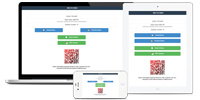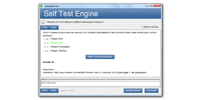간결한 내용
DAA-C01 덤프문제는 다년간의 다양한 시험에 대한 분석을 바탕으로, 시험문제의 주요 발전 경향에 따라 응시자가 직면할 어려움을 정면 돌파하기 위하여 전문가들이 자신만의 경험과 끊임없는 노력으로 제작한 최고품질의 시험자료입니다.다른 교육 플랫폼과 달리 SnowPro Advanced: Data Analyst Certification Exam 시험덤프는 오래된 문제는 삭제하고 새로운 문제는 바로바로 추가하여 덤프가 항상 가장 최신버전이도록 간결하고 눈에 잘 띄는 텍스트로 요약되어 있기에 덤프만 완벽하게 마스터 하시면 DAA-C01 시험패스는 더는 어려운 일이 아닙니다.
우리의 SnowPro Advanced: Data Analyst Certification Exam 시험 덤프 문제는 최고품질의 시험대비 자료입니다. 전문가들이 최신 실러버스에 따라 몇년간의 노하우와 경험을 충분히 활용하여 연구제작해낸 자료라 해당 시험의 핵심문제를 모두 반영하고 있습니다.DAA-C01 덤프로 시험을 준비하시면 시험패스는 더는 어려운 일이 아닙니다. DAA-C01 시험에서 출제 가능성이 높은 문제만 정리한 최신 버전 자료라 가장 적은 문항수로 모든 응시자가 효율적인 시험공부를 할 수 있도록 하고 부담 없이 한번에 DAA-C01 시험을 즉시 통과할 수 있도록 도와드립니다.
커리큘럼 소개
대부분의 분들에게 있어서 자격증 시험이 처음일 수 있으므로 자격증 시험과 관련된 많은 정보는 복잡하고 난해할수 있습니다. 하지만 자격증 취득 초보자들의 덤프공부 후기에 따르면 DAA-C01 덤프는 시험의 모든 출제범위와 시험유형을 커버하고 있어 덤프에 있는 문제와 답만 기억하시면 SnowPro Advanced: Data Analyst Certification Exam 시험을 쉽게 패스하여 자격증을 취득할수 있다고 합니다. DAA-C01 시험대비 덤프는 초보자의 눈높이에 맞추어 덤프를 사용하시는 분께서 보다 편하게 공부할수 있도록 엘리트한 전문가들의 끊임없는 연구와 자신만의 노하우로 최선을 다한 자료입니다.덤프의 도움으로 여러분은 업계에서 또 한층 업그레이드 될것입니다.
진정한 시뮬레이션 환경
많은 응시자 분들이 처음 자격증 시험에 도전하는 것이라 시험보실 때 경험 부족으로 인해 시험시간에 너무 긴장하여 평소 실력을 발휘하지 못하는 경우가 있습니다.이를 피면할수 있도록 미리 SnowPro Advanced: Data Analyst Certification Exam 시험과 비슷한 환경에서 연습하는 훈련을 통해 실제 시험에서 긴장을 완화시키는 것이 좋습니다. 저희는DAA-C01 실제 시험 시뮬레이션 테스트 환경에 해당하는 제품을 가지고 있습니다. 제품 구매후 자신의 계정에 로그인하시고 실제 시험 환경을 체험해 보시면 시험 환경에 적응되어 DAA-C01 시험보실때 문제 푸는 방법을 모색하는 시간이 줄어들어 자신감이 생겨 한방에 시험패스 가능할것입니다.
최신 SnowPro Advanced DAA-C01 무료샘플문제:
1. You are building a real-time data pipeline to ingest IoT sensor data into Snowflake. The data arrives in Avro format via Kafka topics. You need to ensure data integrity, minimize latency, and accurately determine the data volume ingested for billing and monitoring purposes. Which of the following options provide the BEST combination of techniques to achieve these goals? (Select TWO)
A) Use Snowflake's Kafka connector to directly load data from Kafka into a raw data table. After loading, run scheduled tasks to perform data quality checks and transformations.
B) Implement a stream processing framework (e.g., Apache Flink, Spark Streaming) to consume data from Kafka, perform data quality checks and transformations, and then load the processed data into Snowflake using the Snowflake JDBC driver.
C) Utilize Snowflake Streams and Tasks to create a change data capture (CDC) pipeline within Snowflake. Initially, load all data into a raw table. Then, use a stream to track changes, validate the data, and apply transformations incrementally.
D) Implement a custom Kafka consumer application that validates and transforms the Avro data before loading it into a staging table in Snowflake using the Snowflake Python connector. Use a Snowflake Task to move data from the staging to the final table.
E) Use Snowpipe with auto-ingest to continuously load data from a cloud storage location (e.g., AWS S3, Azure Blob Storage) where Kafka Connect is writing the Avro data. Configure Snowpipe error notifications to capture data quality issues. Do not perform Transformation.
2. You are tasked with creating a new data model in Snowflake for a marketing analytics team. The source data is in a 3rd Normal Form (3NF) relational database. The team requires fast query performance for ad-hoc analysis and dashboards, primarily focusing on sales trends by product category, region, and customer segment. Which of the following approaches is MOST effective for transforming the 3NF data into a consumption-ready layer in Snowflake?
A) Create a series of materialized views that aggregate the data at different levels of granularity, such as daily sales by product and region.
B) Migrate the data to Snowflake and implement a Data Vault model for long-term data management and historical tracking, then build a dimensional model on top for the marketing team.
C) Replicate the 3NF database structure directly into Snowflake and create views for the BI tool.
D) Load the data into a single, wide table using a CTAS statement with all necessary columns for the marketing team's analysis.
E) Transform the data into a star schema with a fact table containing sales metrics and dimension tables for product category, region, and customer segment. Use Snowflake's clustering feature on the fact table based on date.
3. You are performing an UPDATE operation on a large table 'CUSTOMER ORDERS with millions of rows. The update logic involves complex calculations based on data from another table 'PRODUCT PRICES. To minimize the impact on concurrent queries and ensure data consistency, which of the following strategies should you implement?
A) Use a MERGE statement to update the 'CUSTOMER ORDERS' table based on the data from the 'PRODUCT PRICES' table.
B) Execute the UPDATE statement directly without any special considerations, relying on Snowflake's default concurrency control.
C) Create a temporary table with the updated values, drop the original table, and rename the temporary table to the original table name.
D) Break the UPDATE operation into smaller batches using a WHERE clause with a limiting condition based on a primary key or date range and commit changes after each batch.
E) Create a new version of table with updated data and switch to new version.
4. You are designing a data ingestion pipeline for IoT sensor data'. Sensors transmit data in JSON format every 5 seconds. The volume of data is expected to grow exponentially. The business requires both real-time dashboards and historical trend analysis. Which of the following strategies should you employ to address these requirements, particularly focusing on optimizing for both ingestion frequency and cost?
A) Utilize an external stream processing engine to pre-aggregate the data into time windows (e.g., I-minute, I-hour) before ingesting into Snowflake using Snowpipe.
B) Ingest data directly into a single Snowflake table using Snowpipe with JSON data type. Create separate materialized views for real-time dashboards and historical trend analysis.
C) Employ a combination of Snowpipe for near real-time data ingestion into a raw table, and then use Snowflake's Search Optimization Service for faster queries.
D) Implement Snowpipe for initial data ingestion, complemented by Snowflake's clustering feature based on timestamp to optimize historical analysis queries. And employ a stream processing engine to perform time window pre-aggregation.
E) Use Snowpipe to ingest data into a raw landing table, and then use Snowflake tasks to transform and load the data into separate tables optimized for real-time dashboards and historical analysis.
5. A data engineering team is implementing a complex data transformation pipeline using Snowflake tasks and streams. They need to monitor the execution of these tasks, track dependencies, and identify potential bottlenecks in near real-time. Which approach provides the MOST comprehensive solution for logging and monitoring the task execution and dependencies within Snowflake?
A) Creating custom logging tables within Snowflake to record task start and end times, along with status codes, and then querying these tables for monitoring purposes.
B) Simply enabling email notifications for task failures in Snowflake.
C) Relying solely on Snowflake's task history view (TASK_HISTORY) and manually analyzing the execution times and statuses of each task.
D) Implementing a complex DAG management system outside of Snowflake and triggering Snowflake tasks from that system, using the external system's logging capabilities.
E) Utilizing Snowflake's Event Tables to capture TASK-related events, combined with an external monitoring tool (e.g., AWS CloudWatch, Azure Monitor) to visualize task dependencies and execution metrics.
질문과 대답:
| 질문 # 1 정답: B,C | 질문 # 2 정답: E | 질문 # 3 정답: A,D | 질문 # 4 정답: D,E | 질문 # 5 정답: E |


 8 고객 리뷰
8 고객 리뷰





